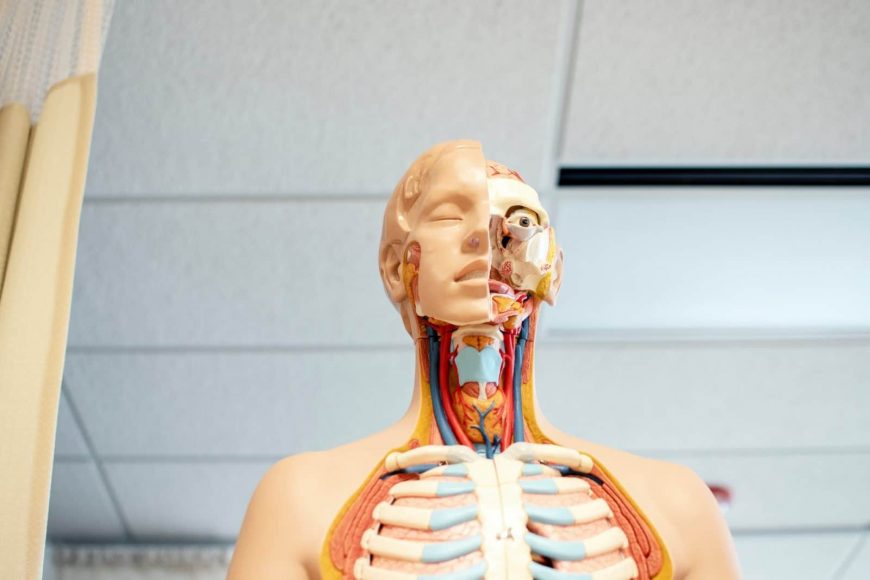The Autonomic Nervous System is part of the Peripheral Nervous System which also includes the Somatic System. Deriving its name from the fact that many of the activities it controls are autonomous or self-regulating, the Autonomic Nervous System, comprising the Sympathetic and Parasympathetic Divisions, executes a variety of functions such as the digestion and the circulation which continue even when a person is asleep or unconscious. Additionally, the Autonomic Nervous System controls the glands as well as the smooth muscles which encompass the heart, the blood vessels, the lining of the stomach and that of the intestines. The aforesaid muscles are called “smooth” as microscopic examination shows that they lack the striated appearance which is a characteristic of the skeletal muscles.
The Sympathetic Division
On either side of the spinal column lie chains of nerve fibres known as Sympathetic Chains as well as masses of cell bodies which are called ganglia from which fibres extend to the various visceral organs such as the thyroid gland, the trachea, the arteries, the veins, the stomach, the intestines and the liver. The fibres coming from the spinal cord to the Sympathetic Chains originate in the thoracic and lumbar portions of the spine, between the cervical (neck) and the sacral (lower spine) regions. All the fibres and ganglia together constitute the Sympathetic Division of the Autonomic System.
The Sympathetic Division tends to act as a unit. During emotional excitement it simultaneously speeds up the heart, dilates the arteries of the skeletal muscles and the heart while it constricts the arteries of the skin and the digestive organs. It is worth mentioning that the activity exhibited by the Sympathetic Division also leads to perspiration and to secretion of certain hormones that increase emotional arousal.
The Parasympathetic Division
The Parasympathetic Division has two parts, some of its fibres originating in the cranial region (above those of the Sympathetic System) while others originate in the sacral region (below those of the sympathetic system).
Unlike the Sympathetic System, the Parasympathetic Division tends to affect one organ at a time. If the Sympathetic System is thought of as dominant during violent and excited activity, the Parasympathetic System may be thought of as dominant during quiescence (state of quietness or inactivity). The Parasympathetic System participates in digestion and, in general, it maintains the functions that conserve and protect bodily resources.
Interaction Between the Divisions
It is important to note that, when both sympathetic and parasympathetic fibres are connected to the same muscle or gland, they usually act in opposite manners. Thus, the Sympathetic System speeds the heart rate while the Parasympathetic System slows it; the Sympathetic System inhibits digestive processes, the Parasympathetic System facilitates them; the Sympathetic System dilates the pupils of the eyes while the Parasympathetic System constricts them.
Despite the aforementioned, there are some exceptions to the principle that the two systems are antagonistic. Although the Sympathetic System is usually dominant during fear and excitement, a not uncommon parasympathetic symptom during extreme emotion is the involuntary discharge of the bladder or bowels. Another example is the complete sex act in the male, which requires erection (parasympathetic) followed by ejaculation (sympathetic).
Written by Gabriella Philippou, Psychotherapist-Counsellor, Focusing Experiential Therapist, Trainer, Coach




